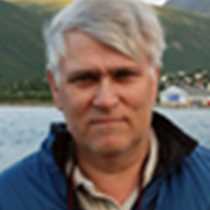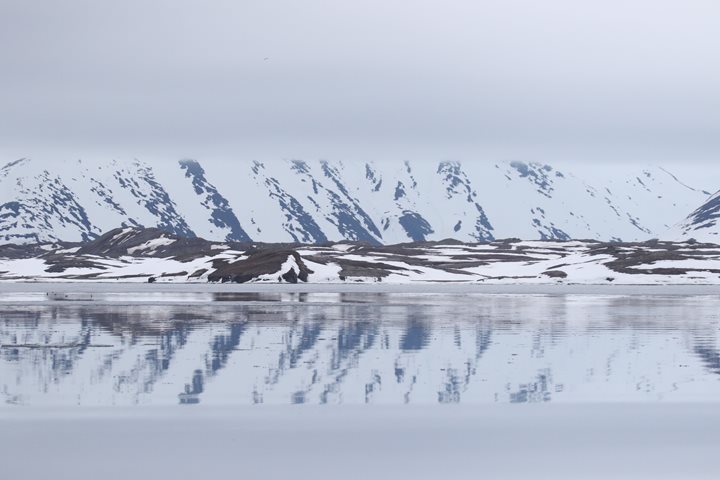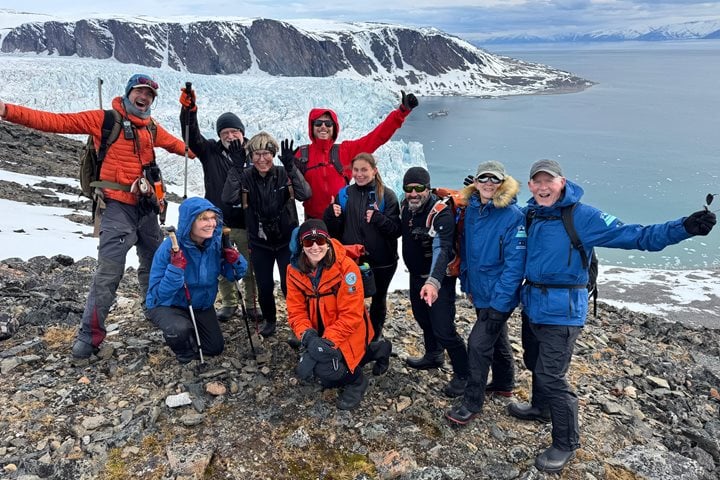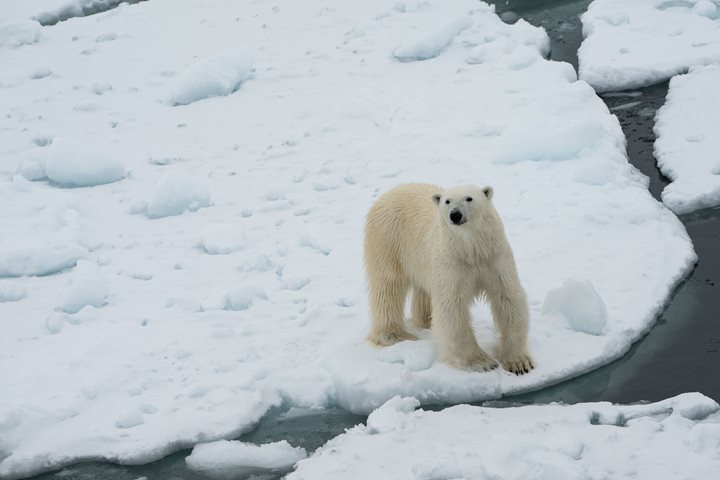Still blessed with glorious weather, we woke up early as the ship was venturing deep into the fjord where mainland Norway is at its narrowest. In fact, from our landing site at the Sami settlement, it is only six kilometers as the bird flies to reach Sweden, but to walk up through the mountains is a hardship. Here there are plenty of steep hills to climb that hold abundant deep, wet snow at higher altitudes—hiking demands many hours even for the most experienced and well trained.
Our morning was set aside to explore the area by land or Zodiac. After finishing breakfast, the ‘long’ hikers went ashore to trek up to the gigantic waterfalls. Soon followed the ‘medium’ hikers who did not ascend as high but still reached the beautiful cascade of water flowing towards the fjord as the snow, now in late spring, is melting rapidly in the alpine zone. The ‘short’ hikers spent their time investigating the settlement, the rivers, and the taiga forest, and they enjoyed some time speaking to some of the locals.
This area is a camp owned by Samis, who used to be reindeer herders in Norway and Sweden. During WWII their herd was confiscated by the German army ending the practice. After 1945 more complicated rules were created for reindeer herders taking their animals across the border. As a result, they are now focused on salmon fishing and picking mushrooms, berries, blue and lingon berries, and of course the gold of the Arctic, cloudberries. Hunting moose was also of importance. But by the late 1950s one of the three families here decided to move on and by the mid-1970s all had left and the site was only used during summer as it is today.
Samis are the indigenous peoples living in northern Norway, Sweden, and Finland and to a certain extent in the western parts of Russia (Kola Peninsula). In the old days their whole life and culture was built around reindeer herding but some, here in northwestern Norway, instead were using the rich fishing grounds to maintain their living and called ‘fishing Samis.’ When and how the Samis arrived to northern Scandinavia is still an unsolved question but most likely they arrived from the east. The languages they speak are not at all related to the Scandinavian.
Those who preferred to be on the water were able to choose between a longer Zodiac cruise or kayaking in the glassy water at the end of the fjord. Seals and white-tailed eagles were sighted.
As we all returned to our ‘home’, National Geographic Explorer, the hotel manager and his team had arranged a great hamburger lunch at our aft sundeck for those who had not seen enough of sunshine and scenery. Slowly during lunch we sailed towards Tysfjord over pancake flat seas.
In the later part of the afternoon it was time for a short outing—a visit a unique site here in northern Norway with petroglyphs at Leiknes. Exactly how old are they? No one knows, but at they least date back to about 6,000 B.C. One of the more interesting and intriguing is a painting portraying a man-like figure holding a ‘harpoon’ device in his hand and in front of him a whale-like creature with a large dorsal fin.
This suggests that whaling has been an ongoing in this area for thousands of years and the large dorsal fin maybe a sign of a killer whale, which we know still today use Tysfjord to hunt herring in autumn.
Back on board we sailed north through an amazing landscape with spectacular scenery including the mountains Lyngen Alps on our starboard side. The glorious weather with sparkling sunshine will hopefully follow us towards tomorrow’s activity, a visit to the ‘Arctic capital’ Tromsø.







